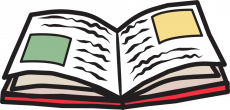EYFS Literacy Focus: Goldilocks and the Three Bears
Overview
- Age Group: 4–5 years (Reception)
- Duration: 30–40 minutes
Focus:
- Reading comprehension
- Vocabulary development
- Phonics (initial sounds)
- Context: Traditional tale to spark curiosity and engagement.
Learning Objectives
- Listen attentively and enjoy a familiar story.
Use expressive reading, props, and eye contact to keep children engaged.
- Join in with repeated refrains (e.g., “Too hot! Too cold! Just right!”).
Pause and prompt children to echo phrases; model enthusiasm.
- Recount key events and identify characters.
Use sequencing cards and ask recall questions during plenary.
- Link sounds to letters by focusing on initial sounds (G, B, C).
Show phonics cards during reading and match them to character names.
Resources
- Big book or storybook: Goldilocks and the Three Bears.
- Picture cards of characters and objects.
- Puppets or props (bowls, chairs, bears).
- Word cards for key vocabulary.
- Phonics cards for sounds g, b, c.
Lesson Steps
Starter (Hook & Prior Knowledge)
- Show a story box with clues (teddy bear, small bowl, spoon).
- Ask: “What story might these belong to?”
- Discuss predictions and look at the book cover/title.
Tip: Encourage children to share ideas in full sentences: “I think it’s…”.
Main Activity (Shared Reading)
- Read the story aloud with expression and actions.
-
Invite children to join in with repeated refrains.
Ask open-ended questions:
- “What do you think will happen next?”
- “Why did Goldilocks go into the house?”
- Highlight initial sounds using phonics cards (G, B, C).
Tip: Point to the letter and say: “G is for Goldilocks!”.
Follow-Up Activities (Consolidation)
- Role play: Act out parts of the story using props.
How to achieve: Assign roles (Goldilocks, bears) and model actions first.
- Sequencing: Arrange picture cards in order.
How to achieve: Work in pairs; prompt with questions like “What happened after she ate the porridge?”.
- Phonics match: Link word cards to pictures.
How to achieve: Say the sound aloud and ask children to repeat.
- Drawing: Illustrate favourite part of the story.
How to achieve: Encourage detail and label drawings with initial sounds.
Plenary (Reflection)
- Recap the sequence of events together.
-
Ask: “What did you like about the story?”
- Reinforce focus sounds (G, B, C).
Tip: Use a quick game: “Show me something that starts with b!”.
Adaptation
Support:
- Visual aids and modelling for EAL or younger children.
-
Sentence starters: “I like…”, “My favourite part was…”.
Challenge:
- Retell the story using independent sequencing cards.
- Compare two versions of the story and ask:
“Who was kind in both stories?”
“What was different about Goldilocks?”.
Assessment Opportunities
- Observe engagement during reading.
- Note ability to recall events and vocabulary.
- Track recognition of initial sounds in phonics activities.
Tip: Use a simple checklist for each child.
Extension Ideas
- Create a group story map of the tale.
- Read another version and compare outcomes:
Ask reflective questions:
“Who was kind in both stories?”
“What happened differently?”.
- Link to maths: Compare sizes (small, medium, large).
How to achieve: Use real objects or pictures for sorting.
